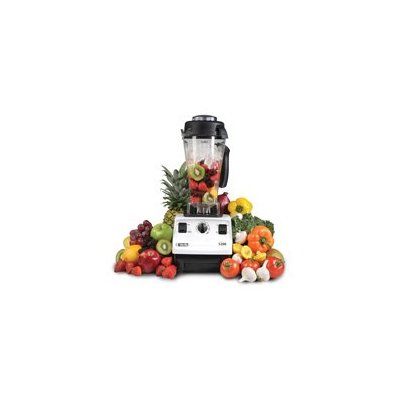Hide the spinach with a Vitamix
My eldest son will not eat green foods, except for M&Ms, and there are only so many battles a mom can have with her son. He's in good shape and very healthy, so I stopped fighting this problem. And that's when a solution popped up.
 As we traversed Costco last weekend, he stopped me by a demonstration of a Vitamix blender. I was skeptical - we have a blender and it didn't cost half of what this blender costs. The first sample was a strawberry-banana smoothie similar to Jamba Juice (in fact, Jamba Juice apparently uses Vitamixes). Then the demonstrator pulled out all the stops and made a drink that had oranges, pineapple, carrots and...spinach.
As we traversed Costco last weekend, he stopped me by a demonstration of a Vitamix blender. I was skeptical - we have a blender and it didn't cost half of what this blender costs. The first sample was a strawberry-banana smoothie similar to Jamba Juice (in fact, Jamba Juice apparently uses Vitamixes). Then the demonstrator pulled out all the stops and made a drink that had oranges, pineapple, carrots and...spinach.
My son watched him put every ingredient in the blender. Vitamix is known for liquifying foods - so every food, including the spinach, was in full view. The mix was made and the green sludge was poured into Dixie Cups for the tasting. His green aversion was mounting but so was his curiosity. And then I had a stroke of brilliance...
It's ZOMBIE JUICE.
For a boy who loves playing plants vs. zombies whenever I'll let him have access to my iphone, this was the most incredible possibility. He had to taste it. He wanted to like it. And like it he did. A lot. And that's how I wound up with a Vitamix 5200 in my kitchen.
At the farmer's market the next day, my son trotted to the farmer with bags of fresh, organic spinach and briskly purchased two bags. And after a few tries, I am now a highly successful smoothie barrista making bright green zombie juice virtually every day. Sometimes we make pink smoothies (strawberries, pomegranite, orange). Or green smoothies (yellow fruits plus spinach). Even made fresh butternut squash soup (pretty good). Nothing quite as fabulous as zombie juice, but hey, he's drinking his vegetables.

